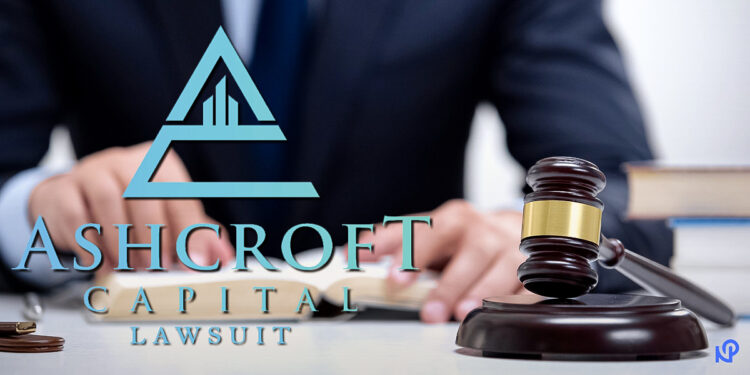Table of Contents
Introduction to Ashcroft Capital and the Lawsuit
Ashcroft Capital is now caught in the middle of a mounting legal crisis.What began as a promising real-estate venture has unexpectedly morphed into a headline-grabbing courtroom battle that shows no sign of fading. Investors, business partners, and the plain curious now rush to untangle the cases’ many overlapping claims. As fresh allegations circulate and counter-statements surface, it is prudent to pause and consider how the firm arrived at this shocking juncture.The stakes feel massive, and whatever happens next could echo through the whole investment arena. Let’s walk through the facts so far and see what they spell for everyone caught up in the drama.
Background of the Legal Battle
Ashcroft Capital’s escalating legal showdown has grabbed the eyes of both investors and analysts, stemming from a knotted history of money moves and alleged misdeeds. At first the uproar focused on claims of lax oversight and broken duties; worried backers quickly noted that routine reports offered almost no real insight.
As new documents rolled in, additional charges appeared, accusing the firm of puffing property values in public statements. Many stakeholders said they were blindsided by decisions that seemed to put quick profit ahead of basic ethics.
The suit matters not just for its immediate fallout but also for the ripples it could send across the wider real estate field. Observers in the legal community now track every turn, guessing how the outcome could set a benchmark for future deal structures and investor protections.
The episode, therefore, casts a harsh light on the weaknesses that can lurk inside even significant, respected funds, sparking urgent debate about who is answerable when private capital meets a fast-changing regulatory landscape.
Allegations Against Ashcroft Capital

Concerns have spread through the investment world since Ashcroft Capital filed its lawsuit. The suit contains allegations of careless fund management and of the firm’s failure to honor its fiduciary duties to backers.
Investors argue that company leaders withheld key details about hidden financial risks. That silence has left many clients feeling exposed and betrayed.
Some stakeholders have also noticed conflicting figures in the firm’s quarterly reports. Those inconsistencies deepen fears about Ashcroft Capitals’ overall stability.
Issues linked to property appraisals are under fresh scrutiny as well. Many investors now ask whether the firm represented asset values truthfully at the closing table.
Together, the allegations tarnish a firm once praised for sound real-estate deals. Stakeholders are nervously watching the courtroom for news that might restore or further damage its reputation.
Response from Ashcroft Capital
Ashcroft Capital has publicly faced lawsuits and accusations head-on. The company firmly states it has done nothing wrong and that its day-to-day practices meet or exceed what the real estate field expects.
They stress a pledge to clear communication and integrity. Their leaders say they will guard the firm’s name and look after investors while the storm blows over.
In an official note, Ashcroft pointed to decades of proven work in managing and buying properties. They say the suit grew from confusion-or twisted facts-and does not reflect how the business runs.
The company is sure the courts will sort things out fairly.For the moment, the firm pled that it will contest every allegation, maintain normal business procedures, and regularly brief clients and partners as the litigation unfolds.
Impact on Investors and Stakeholders
The suit brought against Ashcroft Capital has sent a clear tremor through the wider investing world. Portfolio holders, rightly uneasy, are scrutinizing every press release and court filing as the story unfolds.
Pressure, of course, extends beyond passive shareholders. Many backers have dedicated large sums to the firm’s projects; lingering doubt naturally breeds caution about future capital flows. In finance, faith is often as vital as the numbers on a balance sheet.
For some observers, the legal action raises urgent questions about the firm’s internal diligence and openness. What was known, when was it known, and should earlier decisions now be second-guessed or even abandoned?
Potential Outcomes and Consequences
The complaint lodged against Ashcroft Capital is far from the usual corporate headache; if the case drags on for months or concludes with a substantial verdict, the firm’s day to day operations and the paychecks of every connected employee could be rewritten almost overnight. An adverse ruling might result in damages so large they dwarf legal costs, and that financial jolt would travel through ongoing projects and every proposal still in the pipeline.
In an atmosphere like this, confidence in leadership quickly erodes. Promises of stability ring hollow, fresh capital dries up, and some investors slip away in search of opportunities that seem safer.
Viewed more broadly, the clash reveals regulators mounting concern about how real estate funds disclose hazards and look after their backers. A negative ruling might prod watchdogs to craft tougher rules, compelling firms to overhaul everything from routine updates to casual conversations with investors.
Ashcroft’s reputation would take an immediate hit.Unfinished litigation hangs like a cloud, freezing potential partners, especially those sensitive to even minor PR blows. While the case trudges forward, regulators, investors, and competitors inspect every hint, poised to revise the rules.
Conclusion; Lessons Learned and Moving Forward
The Ashcroft Capital lawsuit has pried open a troubling box of questions about how money moves and how people treat each other in real estate investing. Within this unfolding legal drama sits a sharp nudge for every investor: take your time, study the fine print, and know where the capital lands before you sign.
For stakeholders, teams of managers, advisors, and everyday backers-clarity above all is now the watchword; lessons drawn here could push regulators toward firmer rules. The episode also reinforces that companies must answer for their conduct and that silence after a scandal is no longer a viable shield.
As court dates draw closer, investors and firms alike would be foolish to ignore what the headlines are already teaching us. The fallout, if serious, could ripple through future deals and financing channels, so staying alert is the only sensible way to spot opportunities while dodging hidden costs.
Looking ahead, we need a business culture that places strong ethics beside the balance sheet, not behind it. Should the Ashcroft case spark real change, everyone from small investors to giant funds will gain a fairer, safer market in which to place their money.
